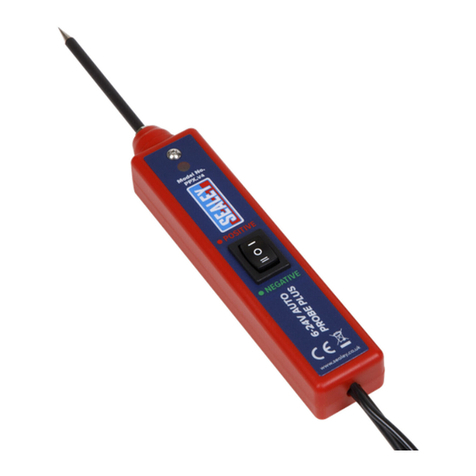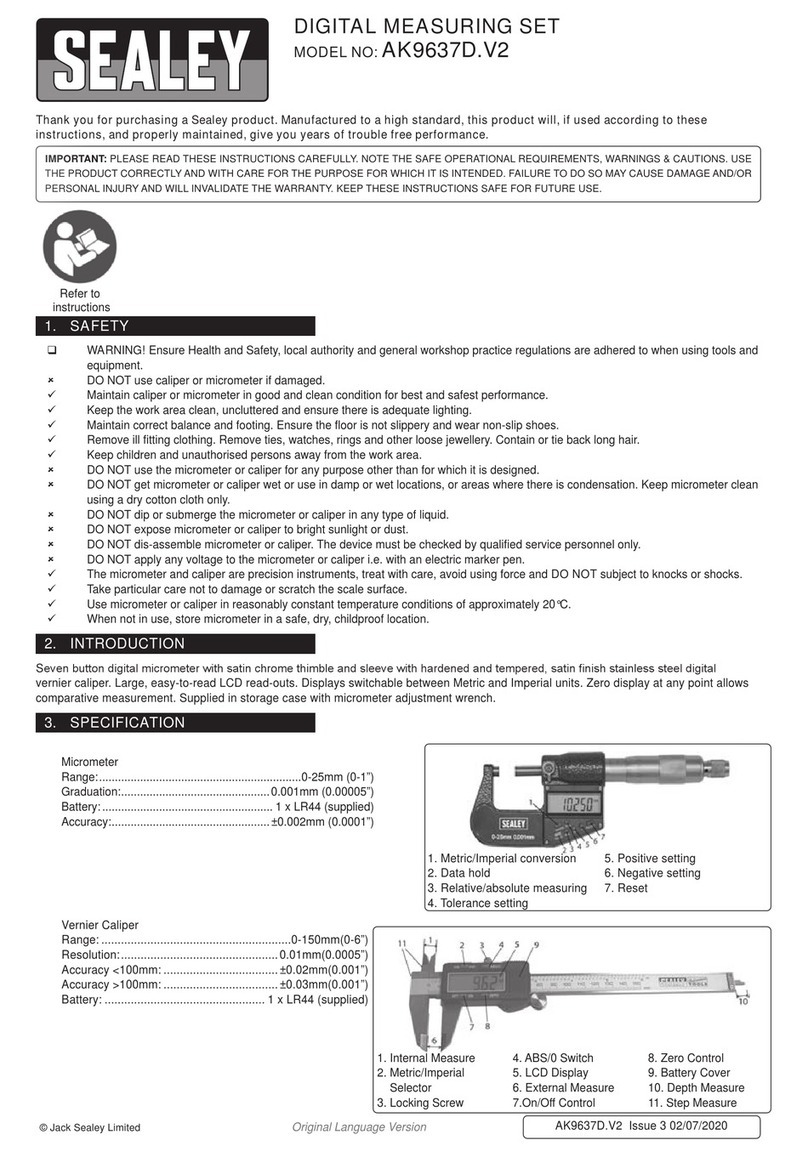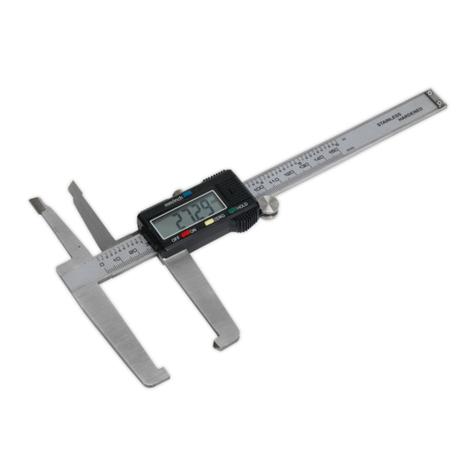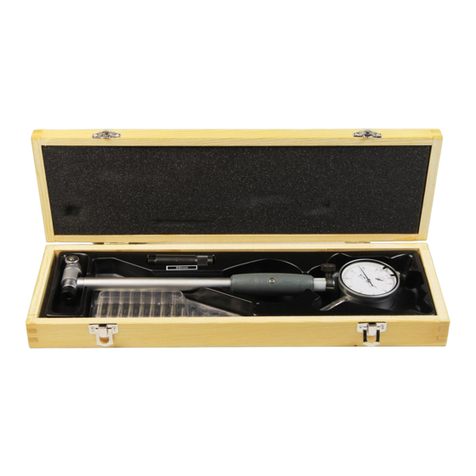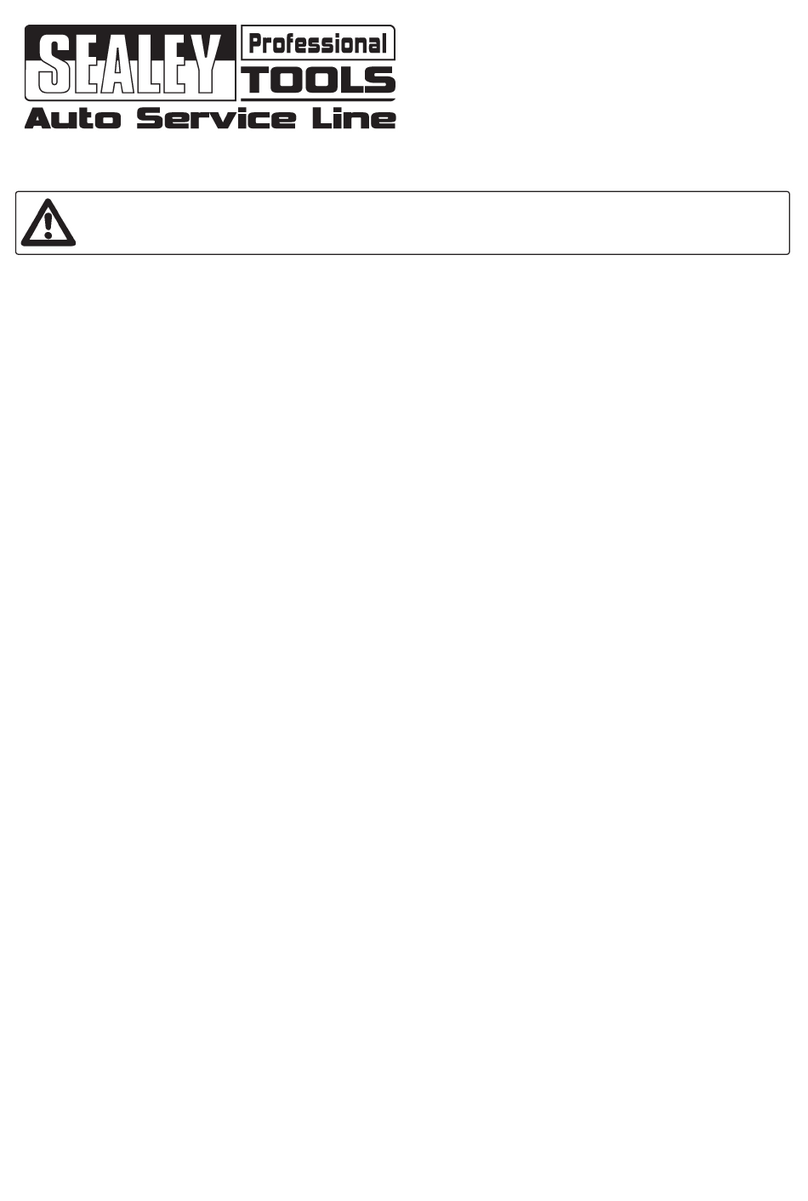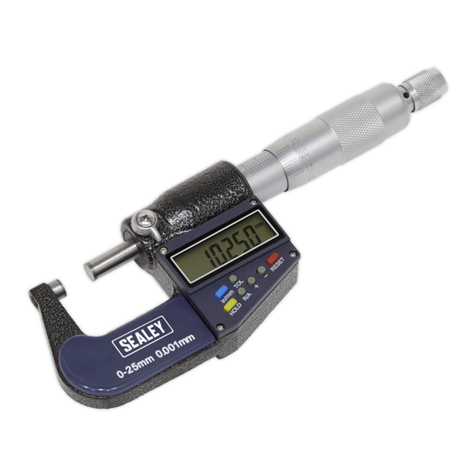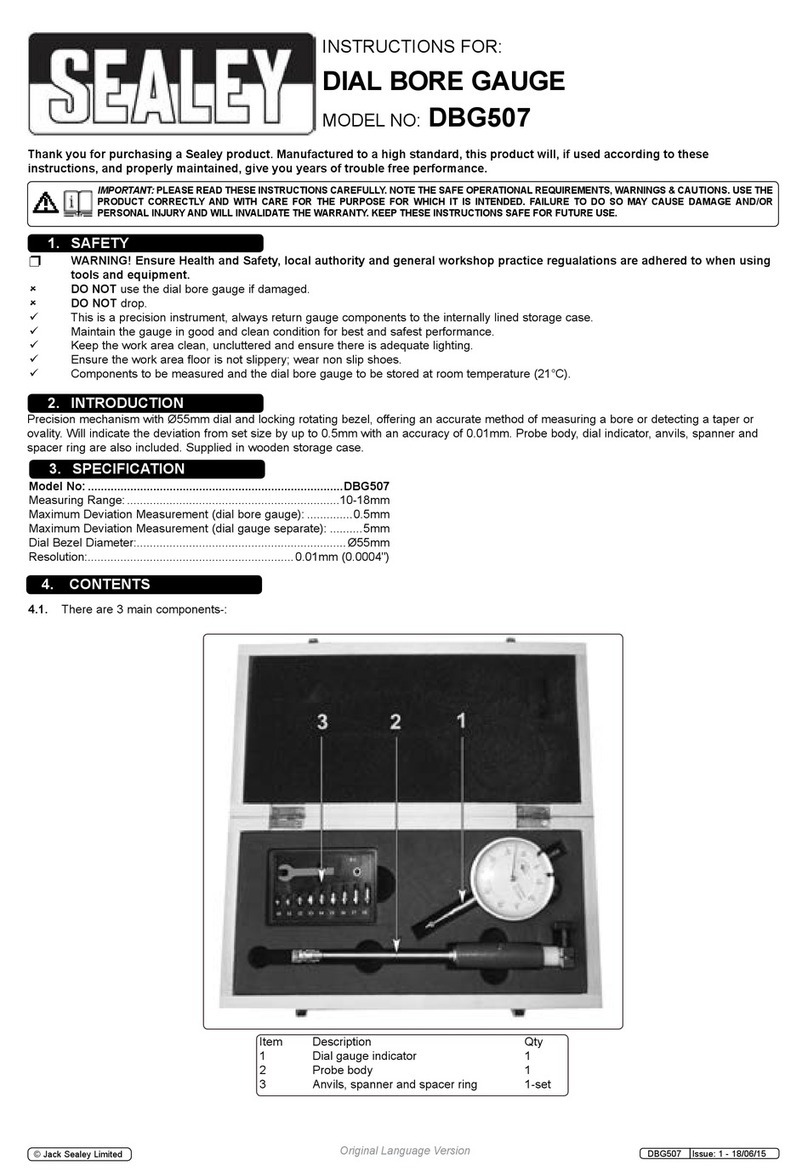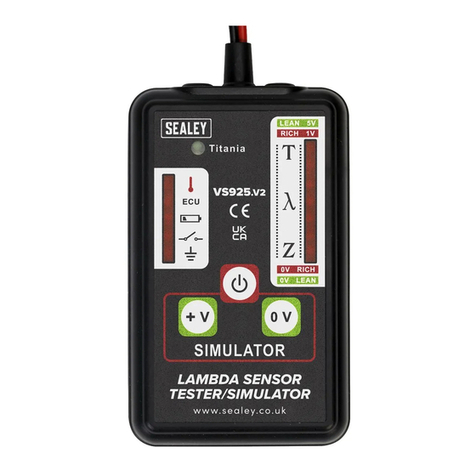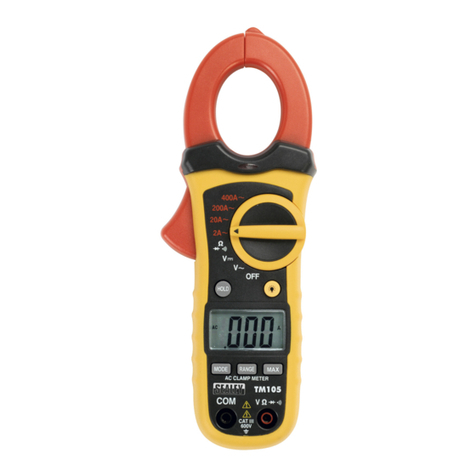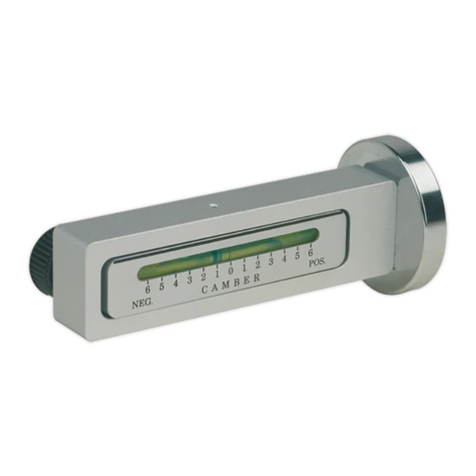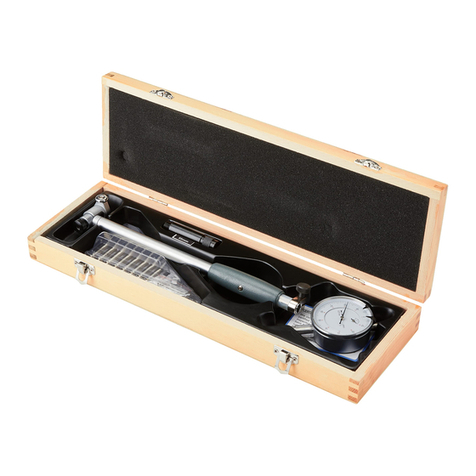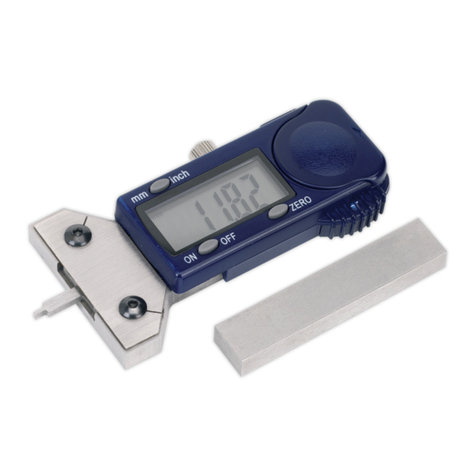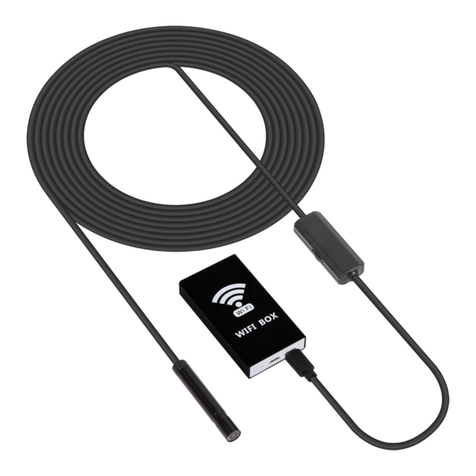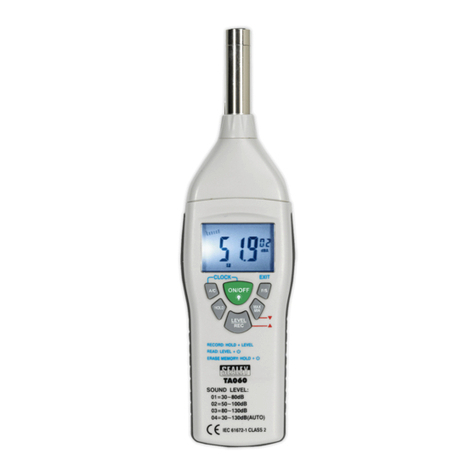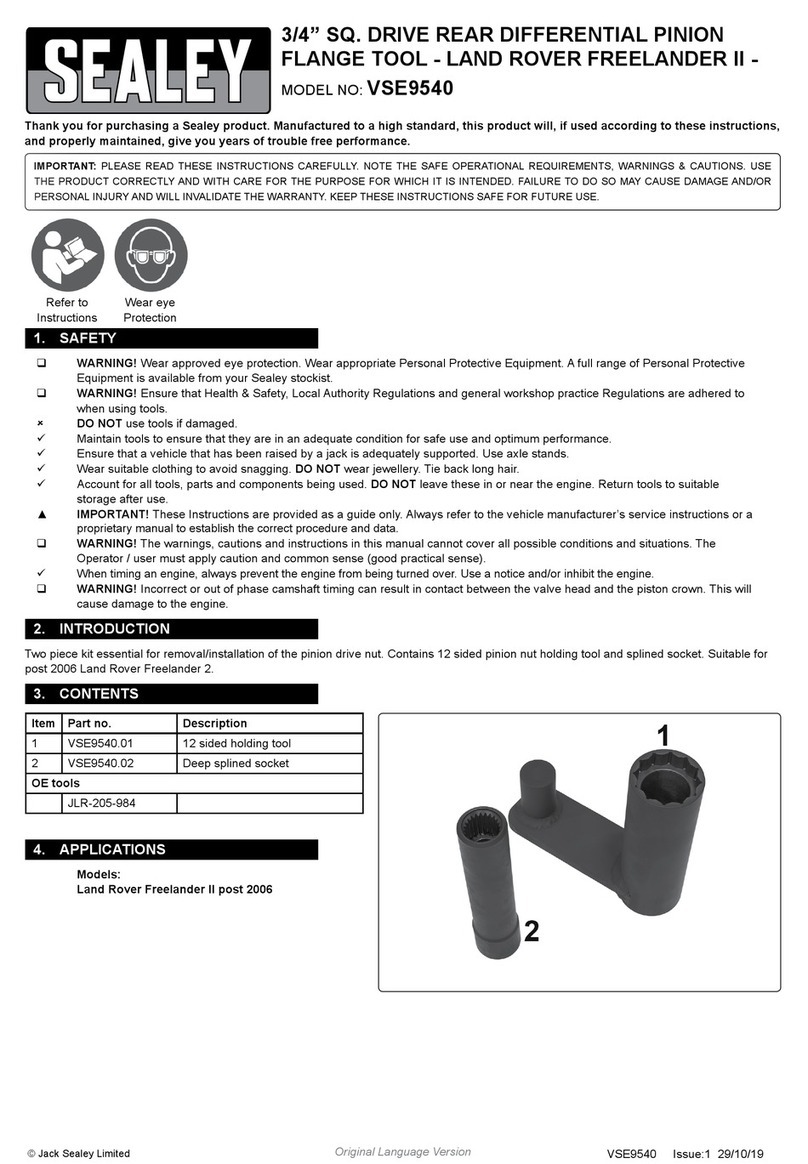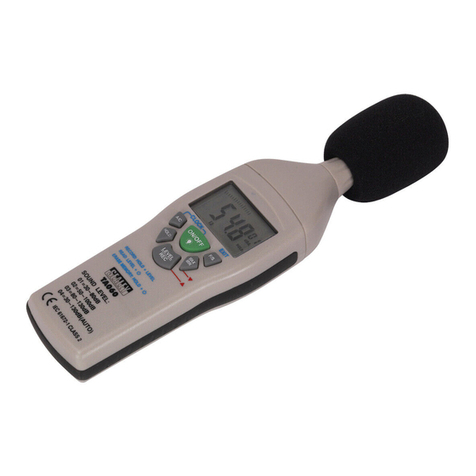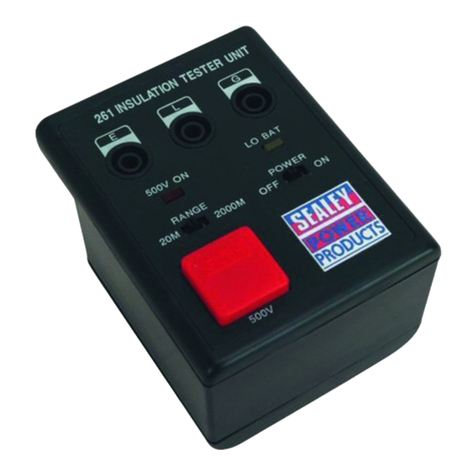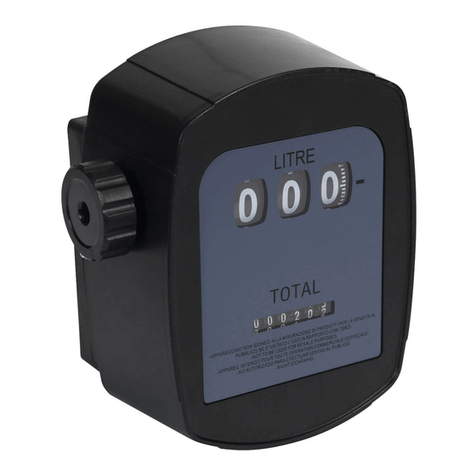
Environmental Protection
Recycle unwanted materials instead of disposing of them as waste. All tools, accessories and packaging should be
sorted, taken to a recycling centre and disposed of in a manner which is compatible with the environment.
Parts support is available for this product. To obtain a parts listing and/or diagram,
please log on to www.sealey.co.uk, email sales@sealey.co.uk or telephone 01284 757500.
NOTE: It is our policy to continually improve products and as such we reserve the right to alter data, specifications and component parts without prior notice.
IMPORTANT: No liability is accepted for incorrect use of this product.
WARRANTY: Guarantee is 12 months from purchase date, proof of which will be required for any claim.
01284 757500
01284 703534
sales@sealey.co.uk
Sole UK Distributor, Sealey Group,
Kempson Way, Suffolk Business Park,
Bury St. Edmunds, Suffolk,
IP32 7AR
www.sealey.co.uk
"x" Anvil size Spacer ring
159.5-160.5 160 No
160.5-161.5 160 1x1mm(10)
161.5-162.5 160 1x2mm(20)
162.5-163.5 160 1x3mm(30)
163.5-164.5 160 1x4mm(40)
164.5-165.5 165 No
165.5-166.5 165 1x1mm
166.5-167.5 165 1x2mm
167.5-168.5 165 1x3mm
168.5-169.5 165 1x4mm
169.5-170.5 170 No
170.5-171.5 170 1x1mm
171.5-172.5 170 1x2mm
172.5-173.5 170 1x3mm
173.5-174.5 170 1x4mm
174.5-175.5 175 No
175.5-176.5 175 1x1mm
176.5-177.5 175 1x2mm
177.5-178.5 175 1x3mm
178.5-179.5 175 1x4mm
"x" Anvil size Spacer ring
199.5 - 200.5 200 No
200.5-201.5 200 1x1mm
201.5-202.5 200 1x2mm
202.5-203.5 200 1x3mm
203.5-204.5 200 1x4mm
204.5-205.5 205 No
205.5-206.5 205 1x1mm
206.5-207.5 205 1x2mm
207.5-208.5 205 1x3mm
208.5-209.5 205 1x4mm
"x" Anvil size Spacer ring
179.5-180.5 180 No
180.5-181.5 180 1x1mm
181.5-182.5 180 1x2mm
182.5-183.5 180 1x3mm
183.5-184.5 180 1x4mm
184.5-185.5 185 No
185.5-186.5 185 1x1mm
186.5-187.5 185 1x2mm
187.5-188.5 185 1x3mm
188.5-189.5 185 1x4mm
189.5-190.5 190 No
190.5-191.5 190 1x1mm
191.5-192.5 190 1x2mm
192.5-193.5 190 1x3mm
193.5-194.5 190 1x4mm
194.5-195.5 195 No
195.5-196.5 195 1x1mm
196.5-197.5 195 1x2mm
197.5-198.5 195 1x3mm
198.5-199.5 195 1x4mm
"x" Anvil size Spacer ring Distance piece
209.5-210.5 160 No Yes
210.5-211.5 160 1x1mm Yes
211.5-212.5 160 1x2mm Yes
212.5-213.5 160 1x3mm Yes
213.5-214.5 160 1x4mm Yes
214.5-215.5 165 No Yes
215.5-216.5 165 1x1mm Yes
216.5-217.5 165 1x2mm Yes
217.5-218.5 165 1x3mm Yes
218.5-219.5 165 1x4mm Yes
219.5-220.5 170 No Yes
220.5-221.5 170 1x1mm Yes
221.5-222.5 170 1x2mm Yes
222.5-223.5 170 1x3mm Yes
223.5-224.5 170 1x4mm Yes
224.5-225.5 175 No Yes
225.5-226.5 175 1x1mm Yes
226.5-227.5 175 1x2mm Yes
227.5-228.5 175 1x3mm Yes
228.5-229.5 175 1x4mm Yes
229.5-230.5 180 No Yes
230.5-231.5 180 1x1mm Yes
231.5-232.5 180 1x2mm Yes
232.5-233.5 180 1x3mm Yes
233.5-234.5 180 1x4mm Yes
"x" Anvil size Spacer ring Distance piece
234.5-235.5 185 No Yes
235.5-236.5 185 1x1mm Yes
236.5-237.5 185 1x2mm Yes
237.5-238.5 185 1x3mm Yes
238.5-239.5 185 1x4mm Yes
239.5-240.5 190 No Yes
240.5-241.5 190 1x1mm Yes
241.5-242.5 190 1x2mm Yes
242.5-243.5 190 1x3mm Yes
243.5-244.5 190 1x4mm Yes
244.5-245.5 195 No Yes
245.5-246.5 195 1x1mm Yes
246.5-247.5 195 1x2mm Yes
247.5-248.5 195 1x3mm Yes
248.5-249.5 195 1x4mm Yes
249.5-250.5 200 No Yes
250.5-251.5 200 1x1mm Yes
251.5-252.5 200 1x2mm Yes
252.5-253.5 200 1x3mm Yes
253.5-254.5 200 1x4mm Yes
254.5-255.5 205 No Yes
255.5-256.5 205 1x1mm Yes
256.5-257.5 205 1x2mm Yes
257.5-258.5 205 1x3mm Yes
258.5-259.5 205 1x4mm Yes
Guide to Parts required versus measured size. (1mm graduations)
DBG5011 Issue: 1 - 23/06/15
Original Language Version
© Jack Sealey Limited


